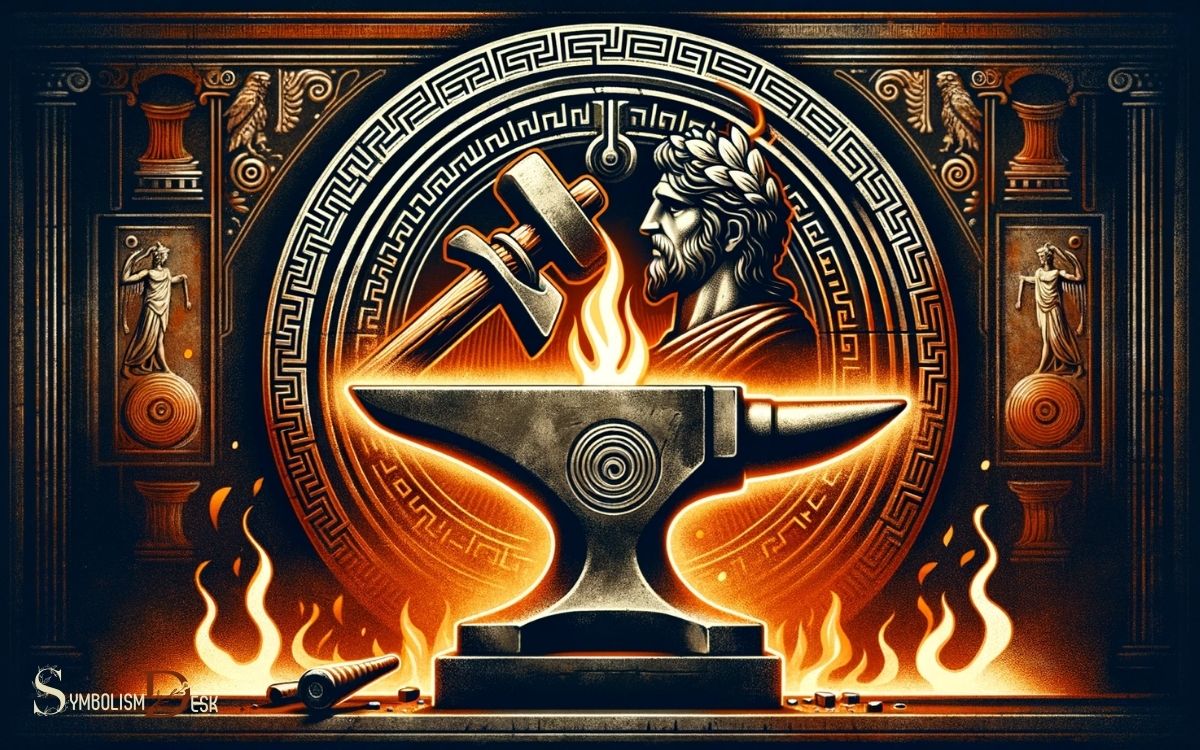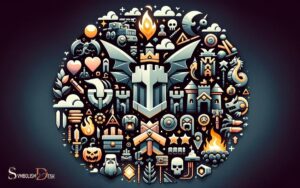Hephaestus Roman Name and Symbol: Artisans!
The Roman name for Hephaestus, the Greek god of blacksmiths, metalworking, carpenters, craftsmen, artisans, sculptors, metallurgy, fire, and volcanoes, is Vulcan.
His symbol is typically the anvil and hammer, signifying his role as the god of metalworking and craftsmanship.
In ancient mythology, Hephaestus (Greek) or Vulcan (Roman) was revered as the master of fire and the forge.
Both of these cultures had a rich pantheon of gods and goddesses, with each deity having their counterpart across these religions albeit with some differences in their stories and attributes.
The symbols associated with deities such as Hephaestus/Vulcan were often linked to their domains and functions.
For Hephaestus/Vulcan, the anvil and hammer are fitting symbols as they represent the tools of a smith and are indicative of creation and manufacturing which were central to his identity.
Additionally, the volcano is sometimes associated with Vulcan, mirroring the destructive and creative powers of fire.
Vulcan, the Roman equivalent of Hephaestus, wields the hammer and anvil as symbols of his dominion over fire and craftsmanship.

Key Takeaway
Hephaestus: The Roman Equivalent
The Roman equivalent of Hephaestus, the Greek god of fire and craftsmanship, is Vulcan. In Roman mythology, Vulcan was revered as the god of fire, metalworking, and the forge.
He was known for his exceptional skill in creating magnificent weapons, armor, and jewelry. Vulcan was often depicted as a strong, hardworking deity, reflecting the qualities associated with the art of blacksmithing.
His importance in Roman culture was evident in the construction of temples and shrines dedicated to him, as well as in various festivals and ceremonies held in his honor.
Vulcan’s association with fire and craftsmanship made him a symbol of creativity, industry, and technological advancement, embodying the Roman ideals of skillful workmanship and innovation.
Symbols of Hephaestus in Roman Culture
Symbols of Hephaestus in Roman culture include depictions of his forge, anvils, and the flaming hammer. These symbols represent craftsmanship, fire, and metallurgy, reflecting Hephaestus’s role as the god of blacksmiths, metalworking, and fire.
The forge, often depicted with billowing flames, represents the center of Hephaestus’s creative power, where he crafted magnificent works of art and powerful weapons for the gods.
Anvils symbolize craftsmanship and the shaping of metal, highlighting Hephaestus’s skill as a master artisan. The flaming hammer, a prominent symbol of his divine craft, signifies the transformative power of fire in forging metal.
These symbols serve as a reminder of the importance of skill, creativity, and the transformative nature of fire in the ancient Roman understanding of Hephaestus.
Depictions of Hephaestus in Roman Art
Depictions of Hephaestus in Roman art often showcase the god in the context of his forge, emphasizing his role as a master craftsman and the transformative power of fire.
The Roman artists depicted Hephaestus in various forms, each highlighting different aspects of his character and skills.
Some common depictions include:
- Hephaestus at the Forge: Often shown actively working at his forge, creating intricate weapons and armor.
- Hephaestus with his Tools: Depictions of the god holding his iconic tools, such as the hammer and tongs, symbolizing his craftsmanship.
- Hephaestus in the Company of Other Gods: Sometimes depicted alongside other gods, illustrating his importance in the Roman pantheon and his involvement in various myths and legends.
Hephaestus’ Influence on Roman Mythology
Frequently overlooked in discussions of Roman mythology, Hephaestus played a significant role in shaping the narratives and beliefs of the ancient Romans. Known as Vulcan in Roman mythology, Hephaestus influenced various aspects of Roman culture.
He was primarily associated with fire, metalworking, and craftsmanship, and these attributes were integrated into the Roman understanding of the divine.
As the god of fire, Hephaestus-Vulcan was revered by blacksmiths and artisans, and his influence extended to the Roman perception of technology and innovation.
Additionally, his complex relationships with other gods, such as his marriage to Venus (Aphrodite in Greek mythology), added layers to Roman mythology.
Hephaestus’ presence in Roman myths and religious practices demonstrates the enduring impact of Greek mythology on Roman culture, highlighting the interconnectedness of ancient belief systems.
The Legacy of Hephaestus in Roman Society
Hephaestus’ enduring influence on Roman society is evident in the integration of his attributes and symbolism into various aspects of Roman culture.
The legacy of Hephaestus in Roman society can be observed in several ways:
- Art and craftsmanship: Roman artisans and craftsmen revered Hephaestus as the god of craftsmanship, incorporating his symbols in their work, such as the hammer and anvil, to seek inspiration and divine guidance.
- Architecture: The Romans associated Hephaestus with fire and metallurgy, aspects prominently featured in their architectural designs and engineering, reflecting his influence on their construction techniques.
- Religious practices: Hephaestus’ veneration in Roman society is reflected in the establishment of temples and religious rituals dedicated to him, demonstrating the lasting impact of his worship on Roman spirituality.
Conclusion
Hephaestus, known as Vulcan in Roman mythology, is symbolized by the forge and the hammer. His influence on Roman culture is evident in the depictions of his craftsmanship in art and his role in mythology.
The legacy of Hephaestus lives on in Roman society through the representation of creativity, craftsmanship, and the power of transformation.
Just as a blacksmith shapes metal with fire and force, Hephaestus continues to shape the Roman cultural landscape with his enduring influence.






